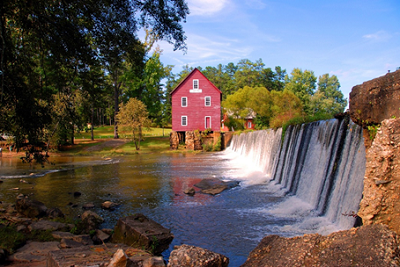
Fayetteville, Georgia, is a uniquely beautiful area full of charm, excitement, and even history. In fact, Fayette County is known for its long, rich past, celebrated by those who call this area home. As a rental property owner in Fayetteville, you can tap into some of this iconic history to attract new renters. Here are a few historical sites and facts you may not know about but should.
1. Fayette County Is the “Pearl”
Fayette County has a nickname, driven by the incredible progress achieved here over four decades. Known as the “Pearl of Metro Atlanta’s Southern Crescent Region,” Fayette County continues to experience unprecedented growth, demonstrating the resilience of its residents who have developed a once rural and sparse land into the thriving suburban community you see today. Here, the focus is on improving the “quality of life” for residents, bringing all the must-have amenities and charm.
2. A Main Street City
Fayetteville earned its official Main Street City designation back in 1996. The iconic downtown square continues to transform, inviting new businesses all the time. But strolling down the sidewalk here will feel like stepping back into the historic streetscape of yesterday. Historic heritage rings true and continues to welcome new residents to the community year after year.
3. Starr’s Mill
The Fayette County Water System bought Starr’s Mill in 1991, which included the 16 acres of land, the mill house, and the iconic dam. Today, it’s a jewel in Fayette County’s crown, welcoming recreational anglers, families, and picnic goers. But the relaxing waterfalls remind visitors of life in the 1800s when mills dotted the Georgia landscape and signified the reliance on water power for the logging and cotton industries. Hilliard Starr took over the mill officially in 1866 and worked it for nearly 13 years. It was the Starr name that endured, permanently endearing it to the hearts of the residents of Fayetteville.
4. The Holliday Dorsey Fife House
The Holliday Dorsey Fife House still stands and harkens back to a different time, the mid-1800s, to be exact. Dr. John Stiles Holliday was a local Fayetteville physician in 1855 when the house itself was built. Back then, the house served as a boarding facility for local Fayetteville Academy students and faculty. What you may not know is that it was a group of ladies who called themselves the Holliday House Association who were responsible for initiating the movement to restore the legendary structure back to its original glory. In 1999, the Fayetteville Downtown Development Authority stepped in and pledged to essentially restore it and transform it into a local history museum for residents to explore. The Holliday Dorsey Fife Museum is currently closed, but it can still be admired from afar as a reminder of the community’s commitment to preserving the past.
5. The Fayette County Bicentennial Parade
Fayette County and the city of Fayetteville were officially named after one of George Washington’s lieutenants, Marquis De LaFayette, during the Revolutionary War. And to commemorate the region’s rich heritage, residents continue to celebrate with the Fayette County Bicentennial Parade. The Historical Society’s mission is to make materials and stories of the area’s legacy available to the public. The parade is just one of the countless events in Fayetteville that attract new residents and visitors.
Encompassing roughly 199 square miles of land, Fayette County is one of the smallest counties in the state. But it’s also a county with a legendary history. And Fayetteville, the county seat, continues to attract new residents to suburban life. As a rental property owner in the area, you can tap into some of these historically relevant facts and stories to demonstrate the community support and appreciation for yesteryear. And as always, if you still need help developing your strategy for marketing the Fayetteville region, let us help!

